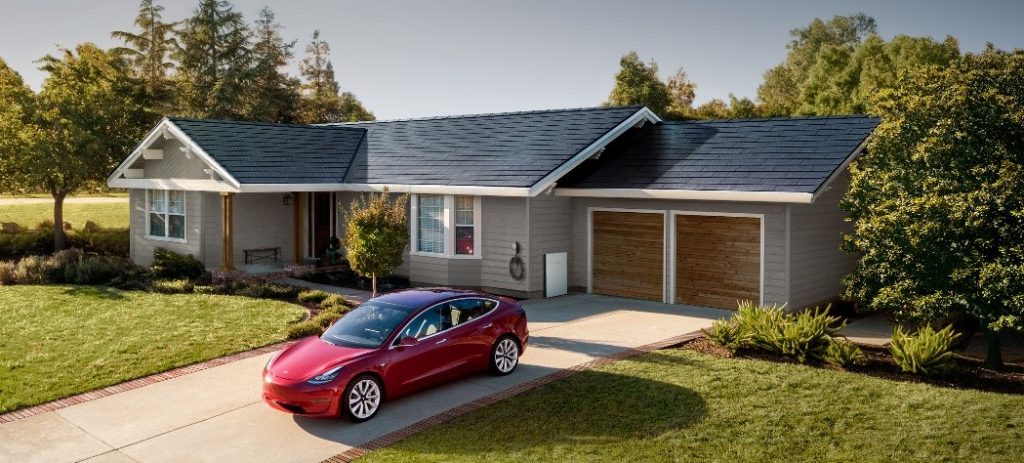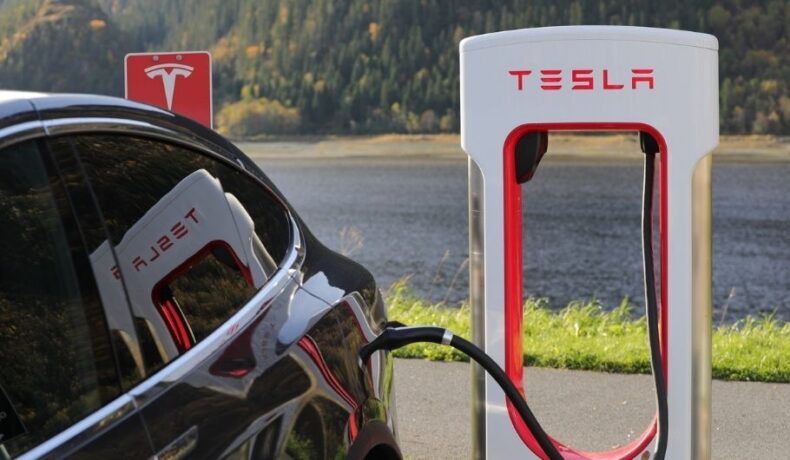Even though charging a Tesla costs 70% less than filling a gas tank, you still have to pay a moderate amount for oil & gas-generated electricity.
However, if you were to charge your Tesla with 100% clean energy, you’d be saving money on electricity AND helping the environment at the same time.
It just goes to show why charging a Tesla with solar panels is the best choice.
The question is, how many solar panels to charge a Tesla?
On average, 8 solar panels rated at 400 watts each will be required to charge a Tesla that consumes 18.1kWh every 62.13 miles. Given that the average mileage for U.S. Citizens is 13,476 miles per year, a DC generation capacity of 3.2kW is sufficient.
To figure out how many panels you need to charge a Tesla, you need to do the following:
- Calculate the daily consumption of your Tesla
- Establish the size of the photovoltaic (PV) system
- Calculate the number of panels
In this article, we will explain to you the different formulas used for these calculations.
Table of Contents
Can You Use Solar Panels To Charge A Tesla?

A PV system can keep your Tesla charged 365 days a year. That’ll provide you with enough savings for a payback period of nearly 8 years.
After a PV system is paid off, you can charge a Tesla for $0 for up to 15 years more, making it a great investment.
To calculate the number of panels required to charge your Tesla, you will need to use the following formulas:
The first formula calculates the daily energy (kWh) required to charge a Tesla. It takes into account its power consumption and the miles driven.

Knowing the daily power requirement, you can calculate the DC size of your PV system by factoring in peak hours of sunlight and a derating factor attached to PV losses.

Finally, we only need to calculate how many panels you need. To make this calculation, you need to divide the DC size of the system by the generation capacity of your panels.

With these formulas, you can easily calculate how many panels you’ll need to charge your Tesla.
Now we will create some examples using different Tesla models. In doing so, we will consider the following criteria:
- 13,476 miles per year – the average mileage for U.S. Citizens.
- 6.25 sun peak hours, considering the medium between the 5 – 7.5 kWh/m2/day perceived in California.
- 400W solar panels, which are high-end PV modules.
- We will also take into account the amount of times you will be able to charge your Tesla vehicle battery by using the Tesla Power Wall 2 which has a battery capacity of 13.5kWh.
How Many Solar Panels To Charge A Tesla Model S?
The Tesla Model S can reach 0 – 60 mph in 2s with a top speed of 200 mph and a range of 396 miles.
This EV consumes on average 18.1kWh every 62.13 miles.
To calculate the daily energy consumption, you will need to use formula (1).

With a 10.76 kWh/day for the Model S, you can calculate the DC size of your system.

To calculate the number of panels required, you only need to use formula (3).

Installing a PV system with 8 x 400Wpanels gives you a DC generation capacity of 3.2kW. This is more than enough to power your Tesla Model S with 100% clean and free energy.
Considering the 10.91kWh daily power requirement for the Tesla Model S, you can also charge it up to 1.23 times or for up to 46 miles with the Powerwall 2.
How Many Solar Panels To Charge A Tesla Model 3?
The Tesla Model 3 is an EV with a beautiful design. It is an All-Wheel Drive (AWD) EV with a dual motor, a safe structural design, and it goes from 0 to 60 mph in 3.1s.
With 353 miles of autonomy, this EV consumes 14.9kWh every 62.13 miles.
To calculate the number of panels required to charge this Tesla, you need to know its daily energy requirements.

The second calculation required is the DC size of your PV system.

Now that you know the DC Power required to charge the Tesla Model 3, you need to calculate how many panels you will need.

A PV system requiring 6 x 400W panels is enough to keep your Tesla Model 3 fully charged.
Moreover, when the whole system is paid for in around 5 years, you will still be able to charge it for 20 more years, for free!
You can also store the solar power generated during the day with your Powerwall 2 and charge it up 1.5 times or for up to 56.29 miles, by using the total capacity of this battery.
How Many Solar Panels To Charge A Tesla Model X?
The Tesla Model X is a superior EV when compared to other models.
It has the following specifications: 7 seats; a 340-mile range; 0 – 60 mph in 2.5s; and it has a power consumption of 20.8kWh every 62.13 miles.
The first order of business is using the power consumption of the Tesla with the average mileage to determine the daily energy requirements.

Now that you know the daily energy requirements of your Tesla Model X, you need to calculate the DC generation capacity of your PV system. Use the derating factor and peak sunlight hours to do this.

With the DC PV system size in place, you only need to calculate the number of panels.

The Tesla Model X is a high-performance EV with a great range. This is why 9 x 400W panels make for a suitable PV system to keep the battery for your Tesla fully charged, every day.
This PV system can also charge a Powerwall 2, allowing you to use the full capacity of the battery to charge the car up to 1.07 times or for 40.32 miles.
How Many Solar Panels To Charge A Tesla Model Y?
The Tesla Model Y has an AWD dual-motor EV, 76 cubic ft. of cargo space, and it can go from 0 to 60 mph in 3.5s, with a range of 303 miles.
This model also has a power consumption of 28kWh every 100 miles.
To calculate the Daily Energy for your Tesla Model Y, you need to use formula (1).

A daily energy requirement of 10.48kWh/day is the second-lowest on the list. Now you need to calculate the DC size of your PV system using formula (2).

Finally, you need to calculate the number of panels and the size of your PV system using formula (3).

A 2.8kW PV system is quite affordable considering that it will charge your Tesla Model Y every day for the next 20–25 years, keeping your battery at 100%.
If you are charging the Tesla at night, you can charge it up to 1.28 times with the full capacity of the Tesla Powerwall 2.
How Many Solar Panels To Charge A Tesla Cybertruck?
The Tesla Cybertruck is a superior performance, utility, and design EV.
This electric truck has an exoskeleton with incredible durability. It features the Tesla Armor Glass, a 100 cubic ft. storage, and it has a 500-mile range.
Additionally, this EV has an energy consumption of 415kWh every 100 miles.
The first thing you need to do is to calculate the daily power requirement for the Cybertruck using formula (1).

With an AC power daily requirement of 15.53 kWh/day, you need to use formula (2) to calculate the DC power of your PV system.

The Cybertruck is a large and heavy vehicle requiring more power, which is why 4.14kWp makes sense for the result. Now let us calculate the number of panels for the system with formula (3).

The Cybertruck has a high level of power consumption. This is why 11 x 400W solar panels are ideal. After all, this is only 2 more panels than the requirement for the Model X.
The Cybertruck has a high power demand of 15.53 kWh/day, which is why a Powerwall 2 can only charge up to 86.90% of its daily capacity.
Therefore, you would need at least two Powerwall 2’s to provide enough energy for this model.
Final Thoughts
Calculating how many solar panels you need to charge your Tesla is actually quite easy.
You can use these results/formulas to make the calculations with your average mileage and the sun peak hours at your state.
You can also estimate how much a Powerwall 2 will charge your vehicle. This way, you can freely store the generated energy during the day, to charge your Tesla at night.
Installing a PV system will allow you to keep your Tesla battery fully charged every day, for 25 years.
You will save thousands of dollars and you’ll be riding your Tesla using 100% renewable energy.
A win-win for you and the environment!

